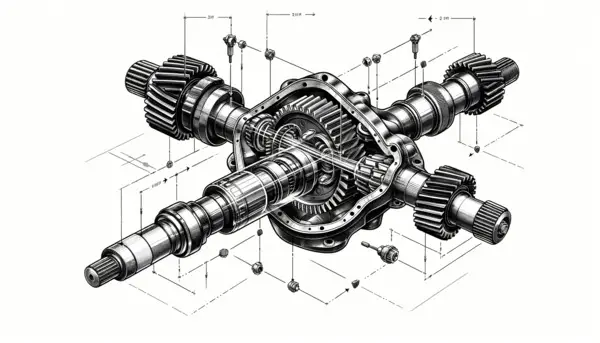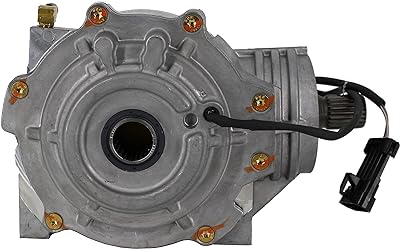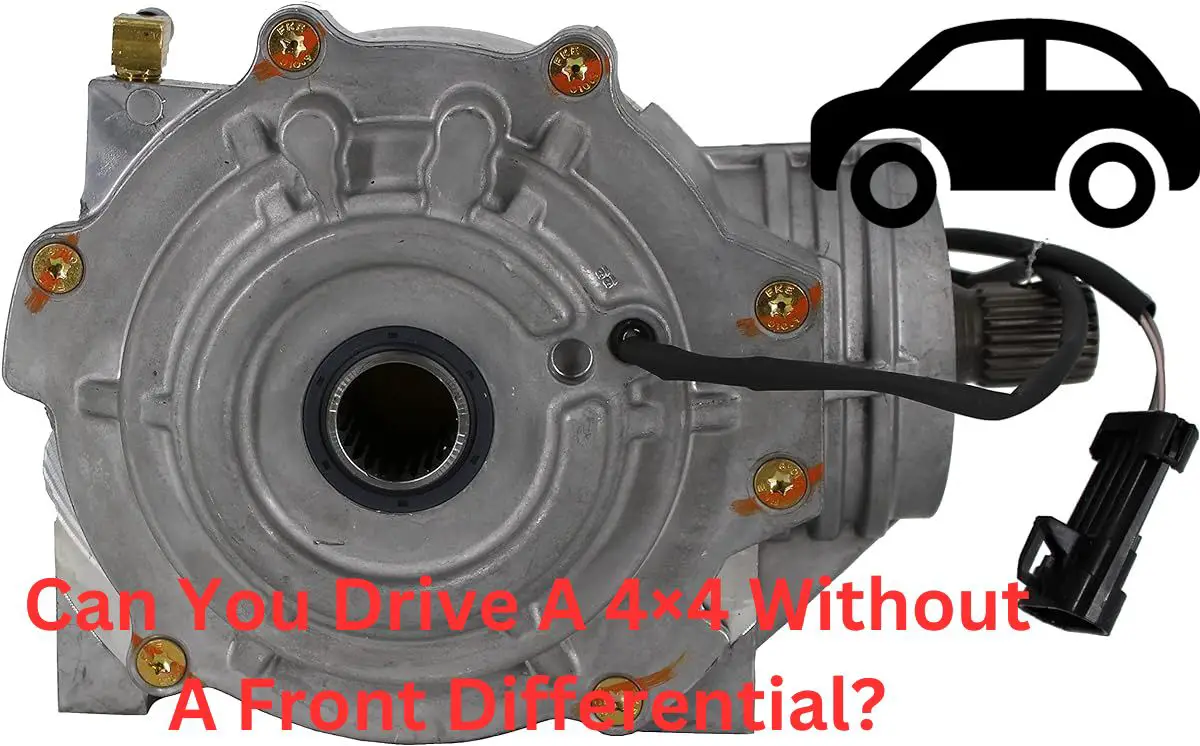Are you an off-road enthusiast considering buying a 4×4 vehicle but wondering whether you can drive it without a front differential? Perhaps you already own a 4×4 with a damaged front differential and are unsure whether you can still drive it off-road.
The front differential is a crucial component in a 4×4 vehicle that allows power to be distributed to both front wheels. It helps the vehicle navigate challenging terrains, such as steep inclines or slippery surfaces, by ensuring that both wheels maintain traction. But what happens if the front differential fails or is removed altogether? Can you still drive a 4×4 without a front differential?
The short answer is yes, you can drive a 4×4 without a front differential, but it’s not recommended. Driving without a front differential in off-road terrain can cause irreparable damage to your vehicle’s drivetrain. It can also make your vehicle unsafe and difficult to control, leading to accidents and injuries.
In this blog post, we’ll explore the role of the front differential in a 4×4 vehicle, the effects of driving without one, and whether it’s safe to do so. We’ll also provide you with tips on what to do if your front differential fails and how to avoid damaging your vehicle’s drivetrain when driving off-road.
So, let’s get started!
How Does the Front Differential Work?

The fascinating mechanism of the front differential comprises various interconnected gears that work in unison to ultimately propel the vehicle’s front wheels. At the core of this mechanism, we have the ring gear that latches onto the driveshaft, making the differential case spin.
Simultaneously, the pinion gear is connected to the front driveshaft, creating a perfect mesh with the ring gear. Within this spinning differential case, we find the marvelous spider gears, which harmoniously engage not just the ring gear, but also the side gears on the axles.
As the vehicle makes its journey, power from its transmission is channeled to the ring gear, setting the spider gears into motion. Consequently, these spider gears induce the rotation of the side gears on the axles, ultimately causing the front wheels to triumphantly turn and guide the vehicle towards its destination.
The front differential also has a limited-slip or locking feature that engages when one wheel loses traction. A limited-slip differential helps transfer power to the wheel with better traction, while a locking differential locks the front wheels together, ensuring that both wheels rotate at the same speed.
What Are the Signs of a Bad Front Differential?

When you’re out on the road, the last thing you want to experience is difficulty steering or making turns. If you notice your vehicle not handling quite as well as it should, it might be time to check for issues with your differential.
As a crucial part of your vehicle’s drive system, a faulty front differential can create a symphony of unsettling noises, such as grinding, clunking, howling, or even shrieking while you’re driving. Pay attention to whether these sounds change in pitch as you accelerate or decelerate, as that’s a typical telltale sign for differential problems.
In fact, the issue could stem from something as specific as a loose pinion bearing within your rear differential. But the concerns don’t end there; a bad front differential can also introduce an array of unwelcome vibrations inside your vehicle. Other red flags include unusually high oil consumption and peculiar wear patterns on your tires.
So, don’t ignore these warning signs. Get your vehicle checked out and ensure a smoother and safer driving experience.
Can You Drive A 4×4 Without A Front Differential?
When you ask me can I drive a 4×4 without a front differential?
My direct answer is yes. Many 4×4 vehicles don’t come with front differentials, and they are still able to operate.
Often, a 4×4 transmission can be modified to function without the differential with the use of an additional drive shaft running off the back of the transmission. But if the front differential doesn’t work, the vehicle might not be able to move as it should, and if you try to drive it, you might end up damaging other parts of the drivetrain.
We also observe that in some cases, vehicles that lack front differentials are more likely to experience more wear and tear on their transmissions, as torque is sent to all four wheels at once rather than just two. If this happens, then extreme care must be taken when driving such a vehicle. Driving such a vehicle on a smooth road without bumps or inclines can accelerate damage and result in substantial repair costs.
Alternatives to Driving Without A Front Differential
Driving without a functional front differential can be perilous and lead to significant damage to your vehicle’s drivetrain. Should an issue arise with your front differential, it’s essential to weigh your options carefully. Opting for a replacement, whether new or rebuilt, can be the safest and most effective solution.
Alternatively, some adventure seekers may choose to install a locking differential in the front axle, which enhances traction capabilities in off-road settings. Keep in mind, though, that this option may prove costly and even unsuitable for day-to-day use.
If your 4×4 offers a 2WD mode, switching to it temporarily can allow you to drive safely on the road while awaiting repair. Regardless, prioritizing the health of your vehicle’s components is crucial for both your safety and your 4×4’s longevity.
Ended Note
Ultimately, driving a 4×4 without a front differential is not recommended and can cause serious damage to your vehicle’s drivetrain. The front differential plays a crucial role in distributing power to the front wheels and allowing them to turn at different speeds.
Without it, your vehicle may struggle to turn, handle poorly, and experience excessive tire wear. If your front differential fails or is damaged, there are alternatives to consider, such as replacing the differential, installing a locking differential, or using 2WD mode. However, it’s essential to keep in mind that these options may not be suitable for everyday driving and may require additional costs.
In any case, it’s always best to consult with a mechanic or a certified technician to ensure your 4×4 is safe to operate.
See also:
